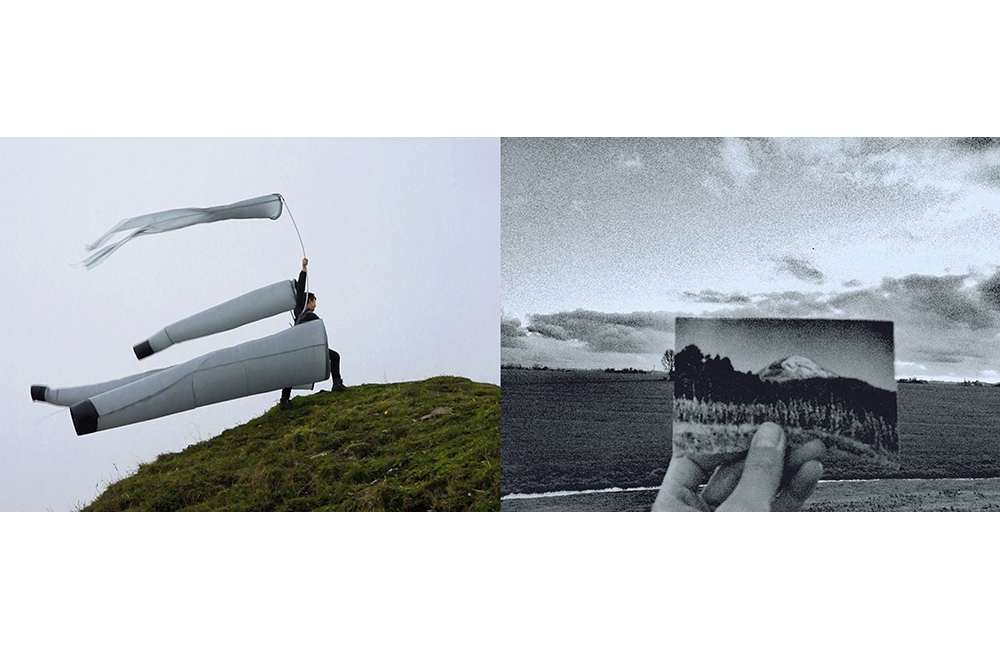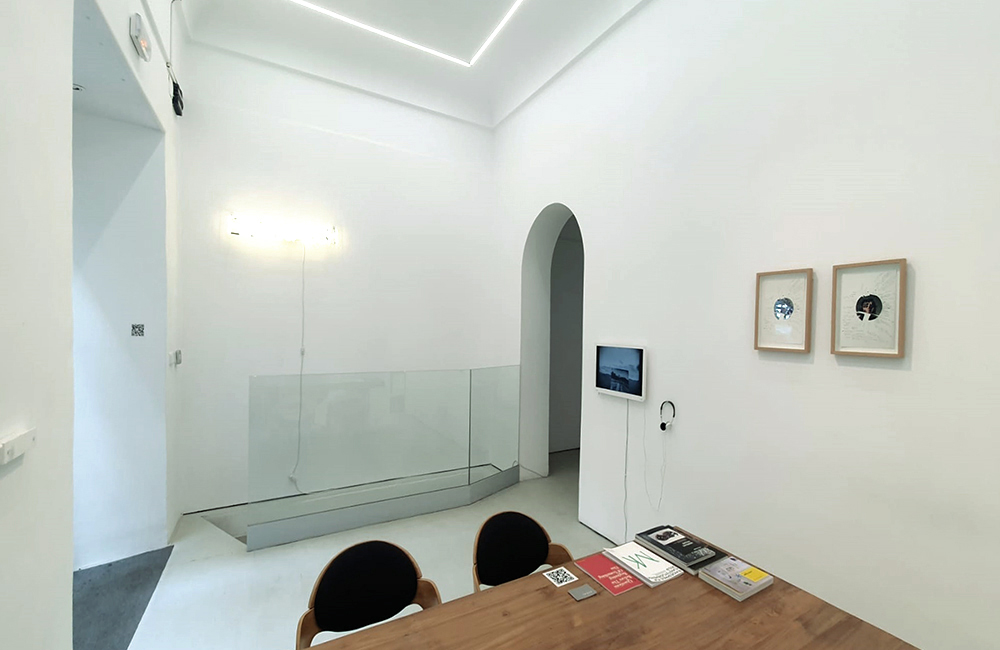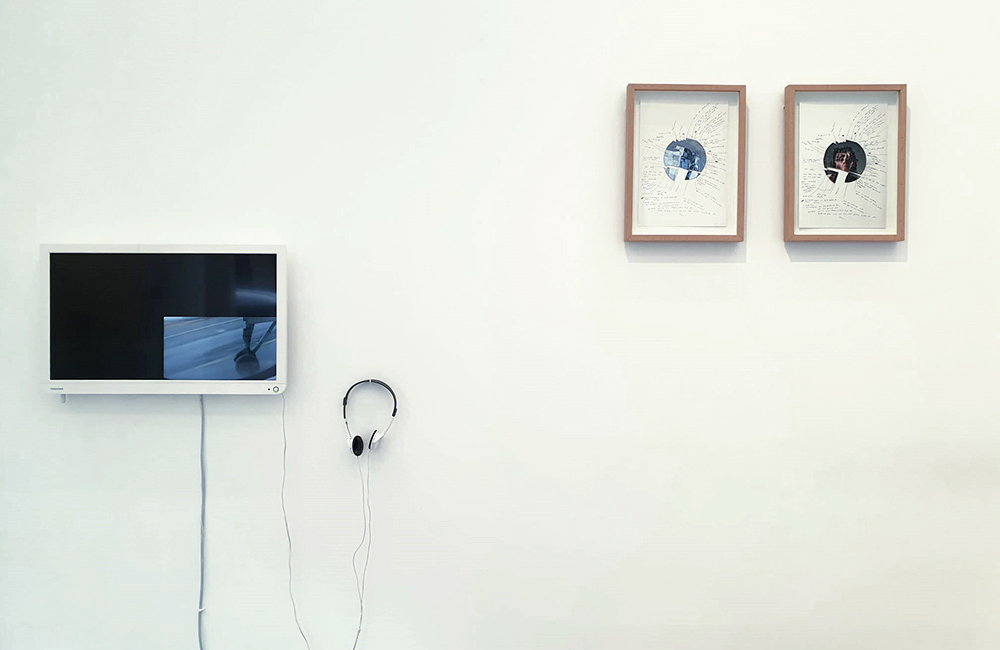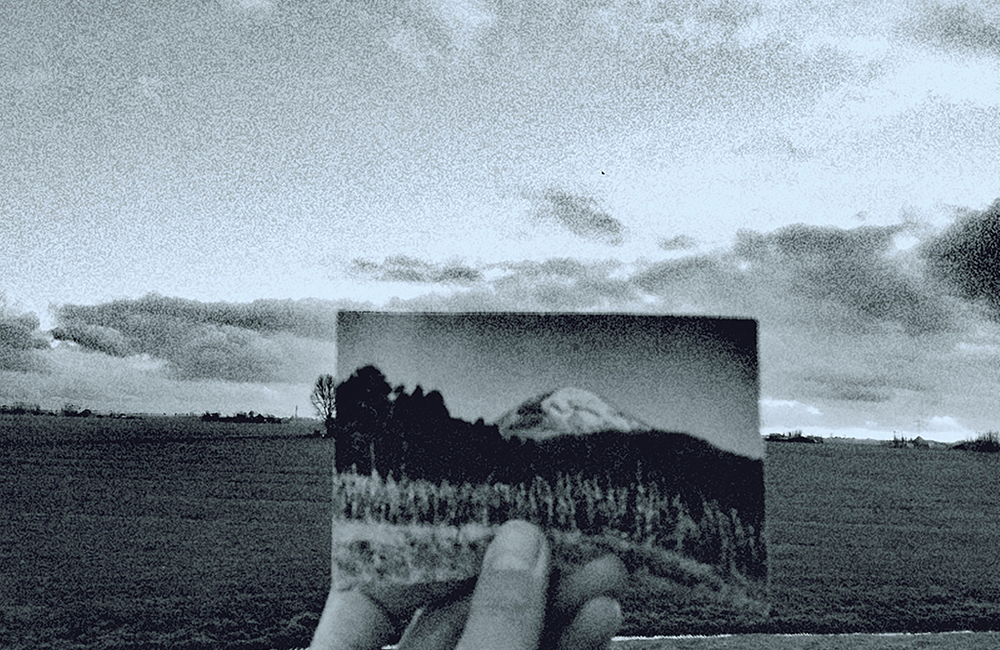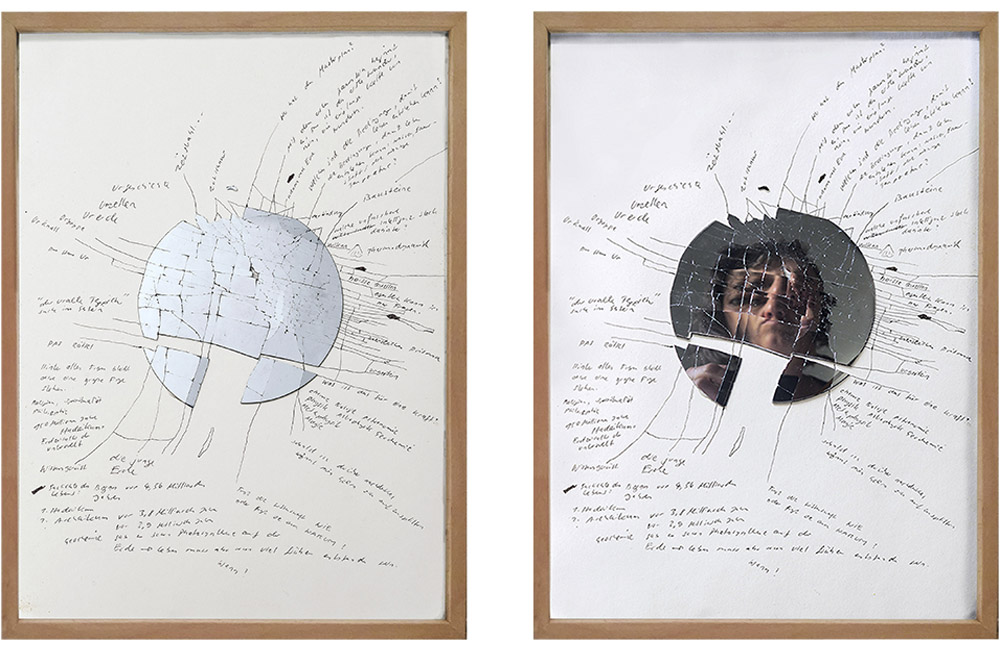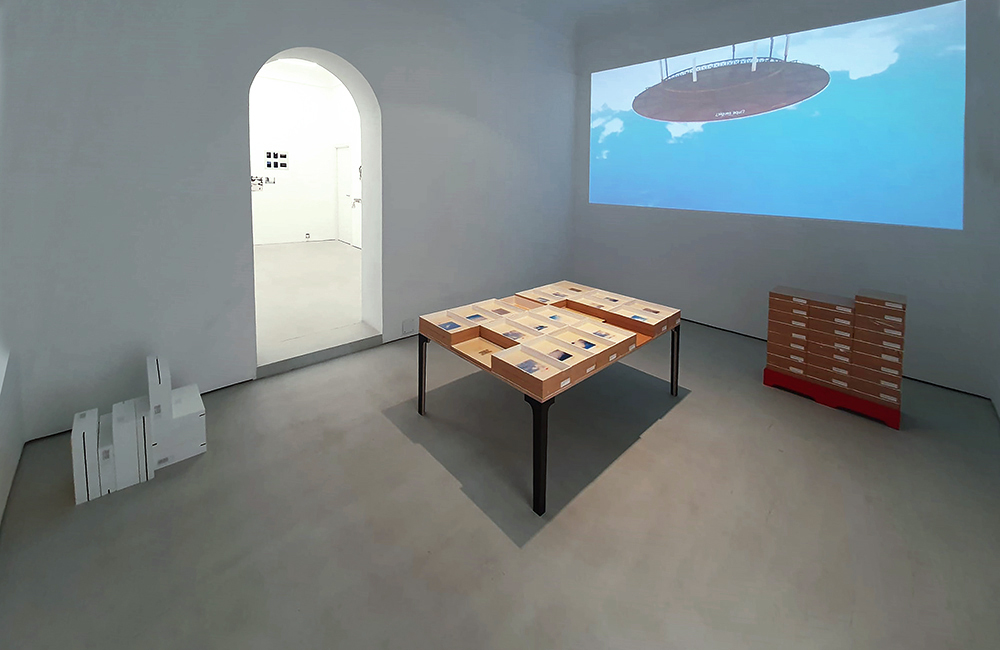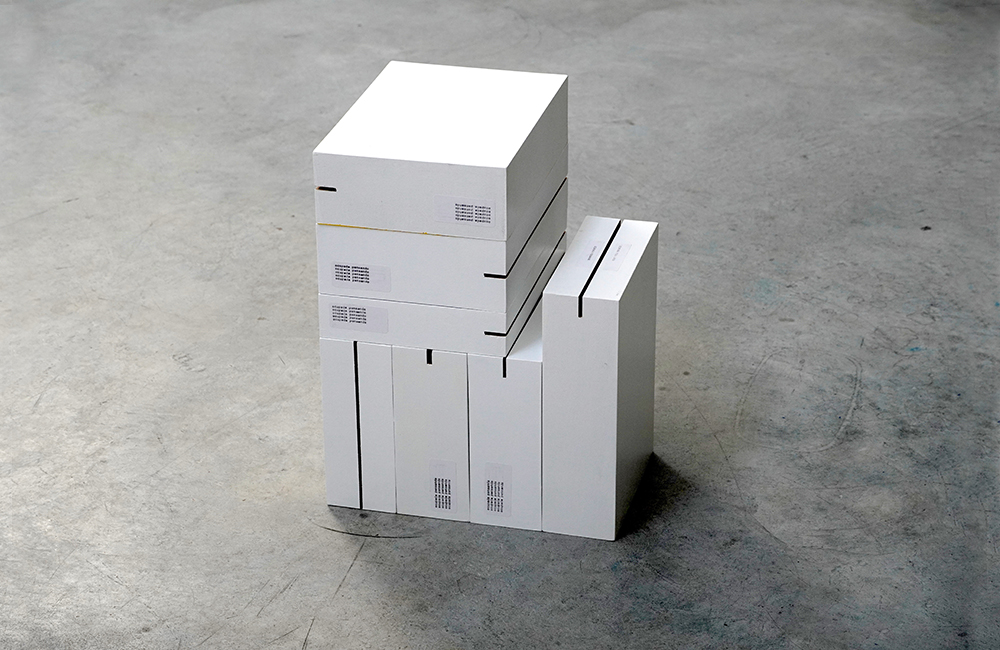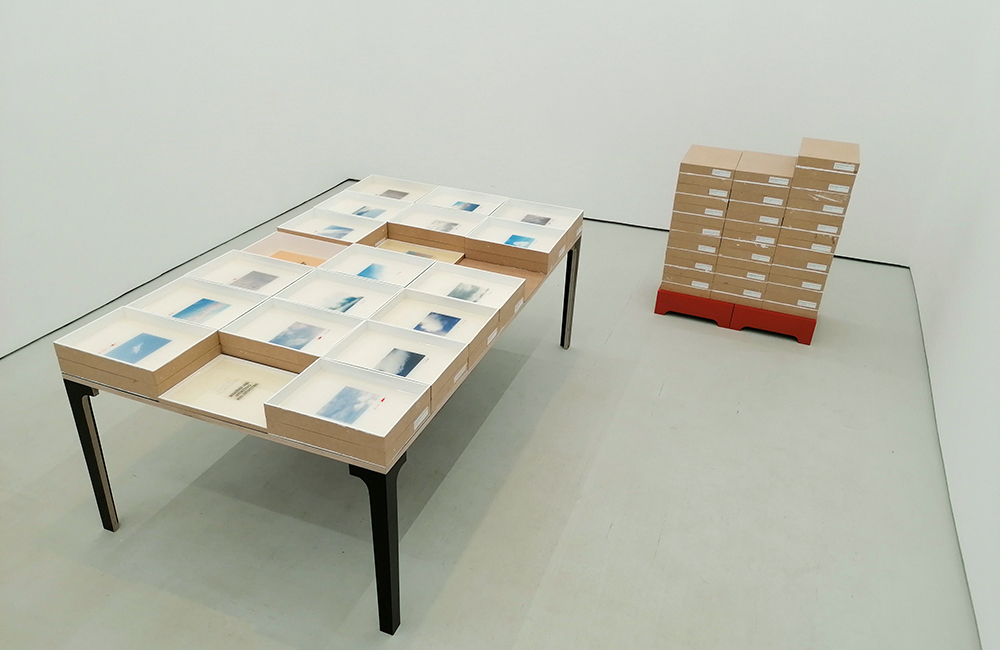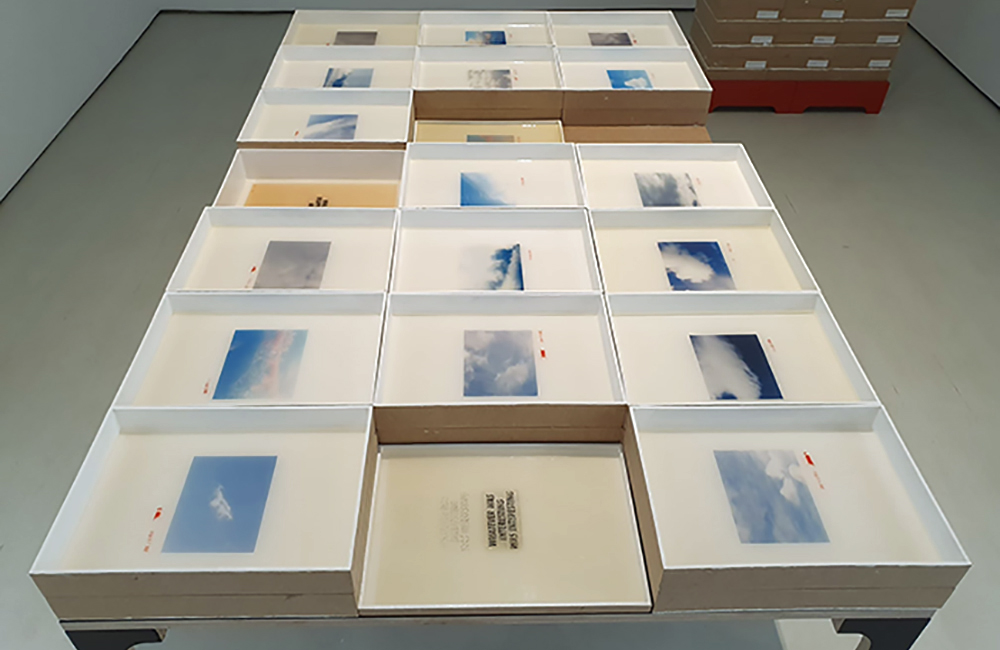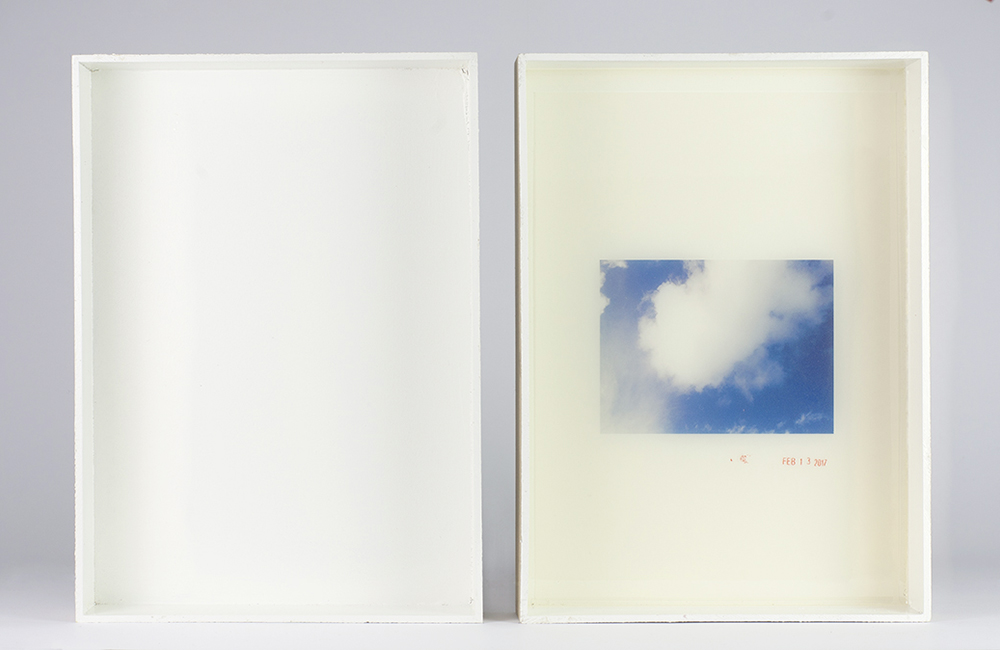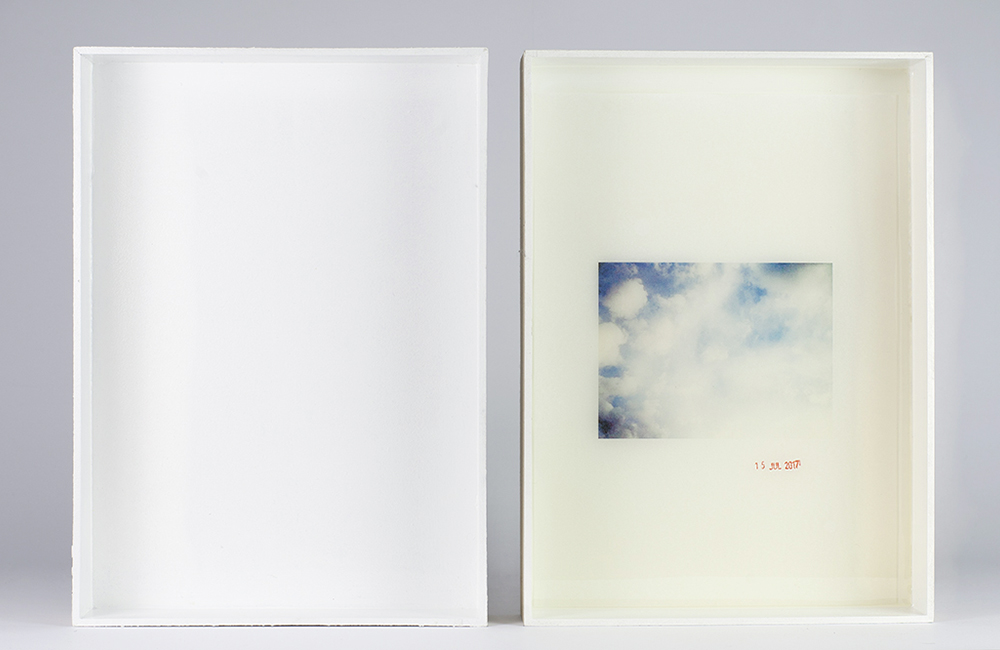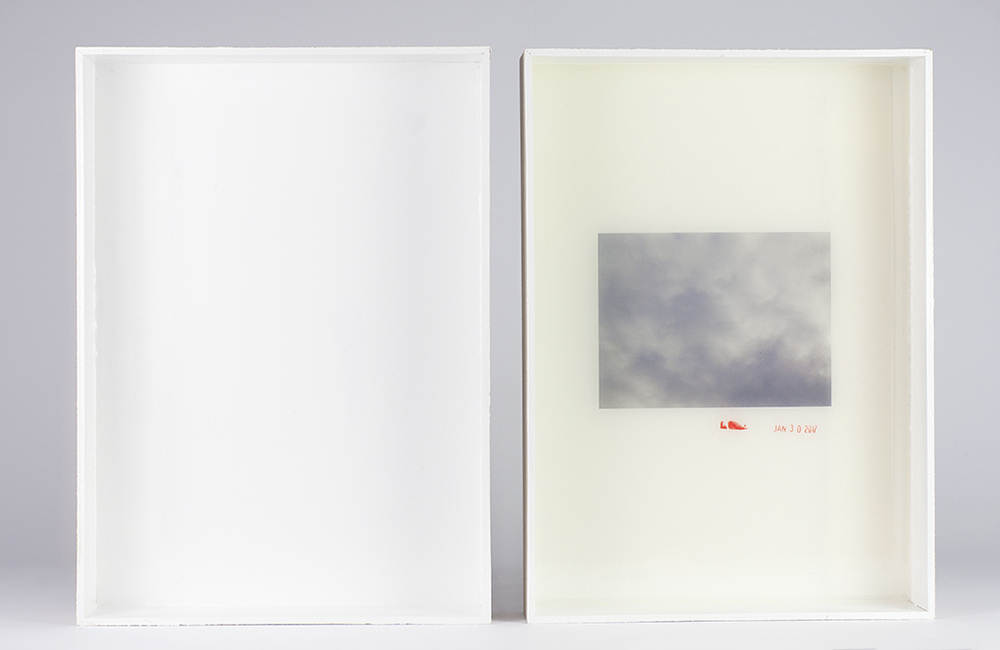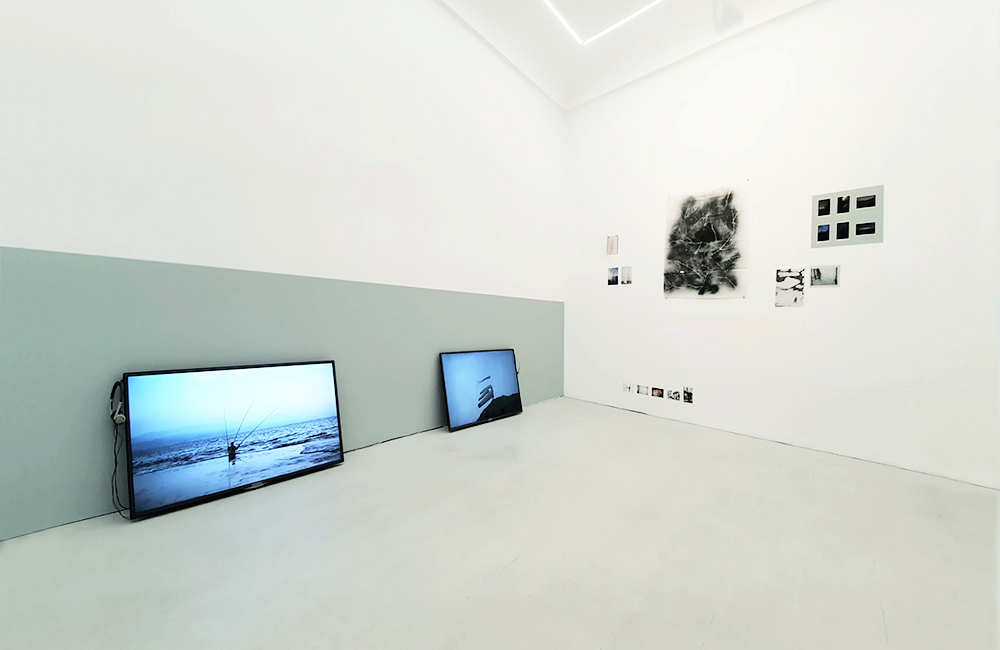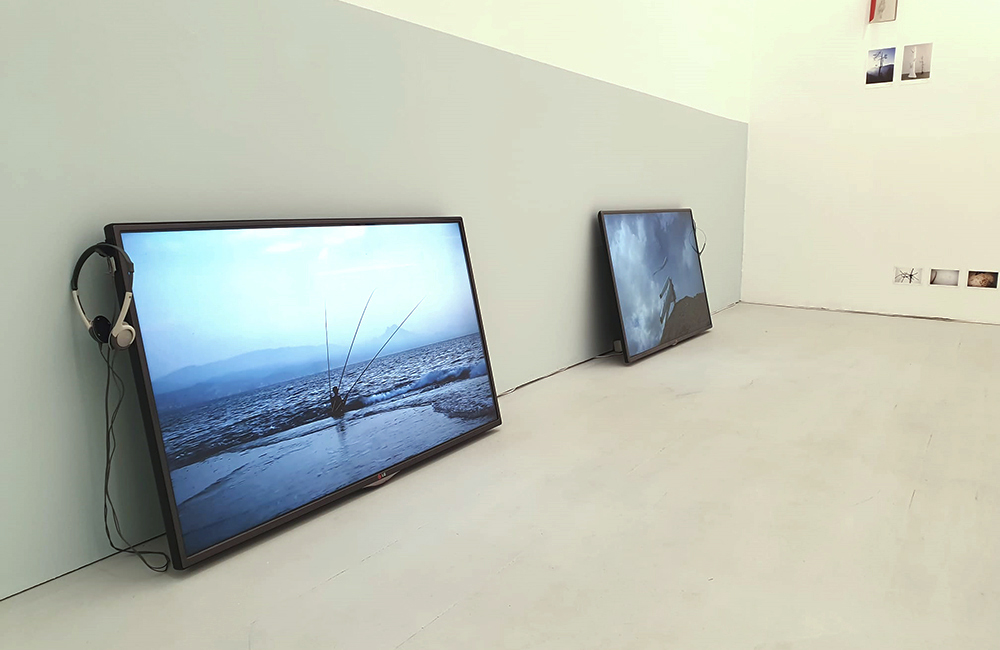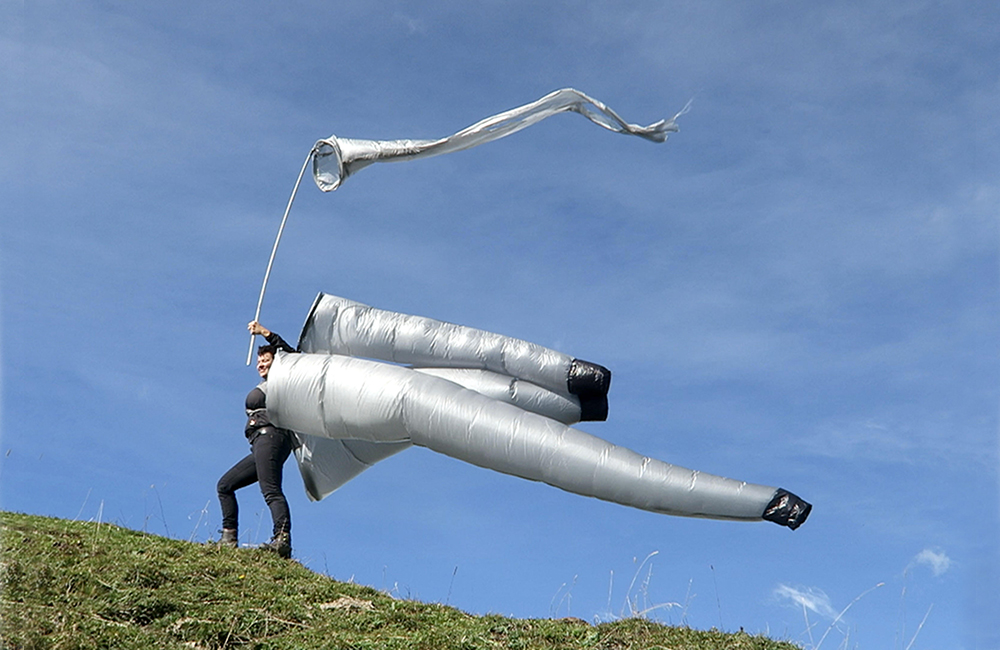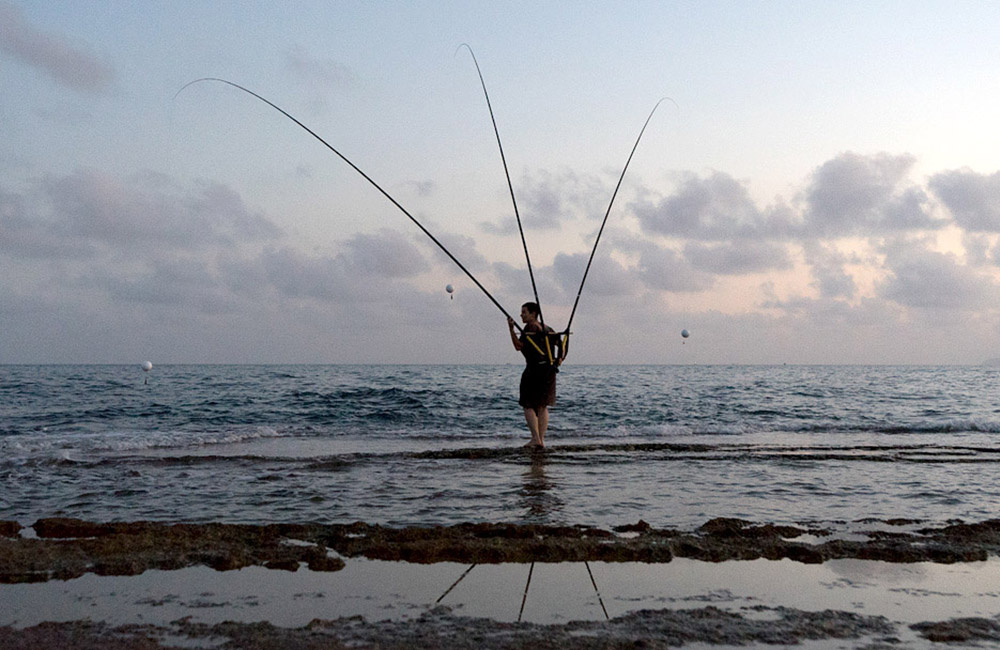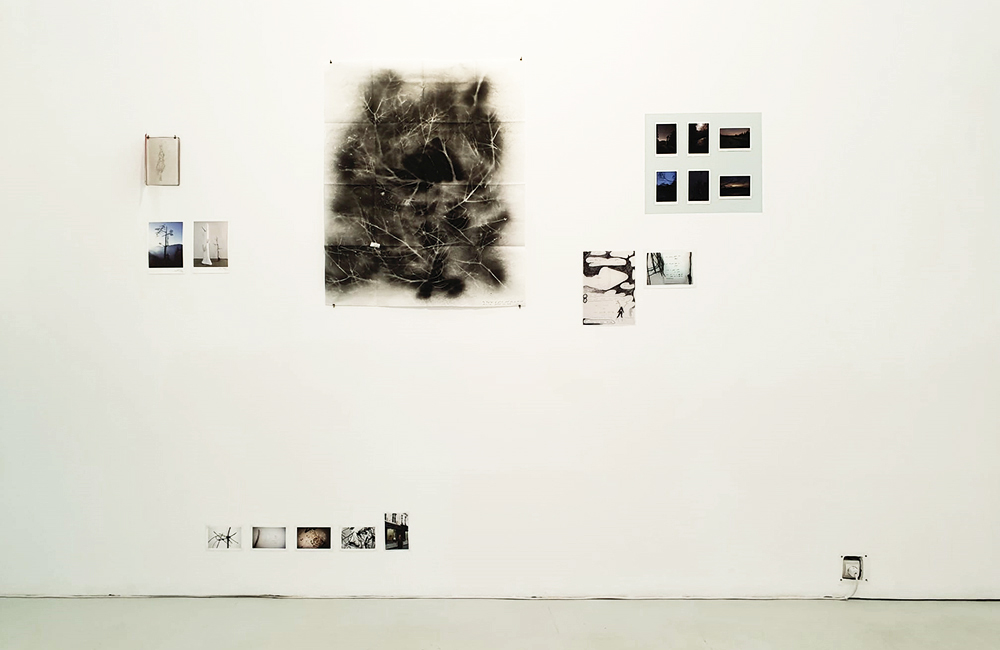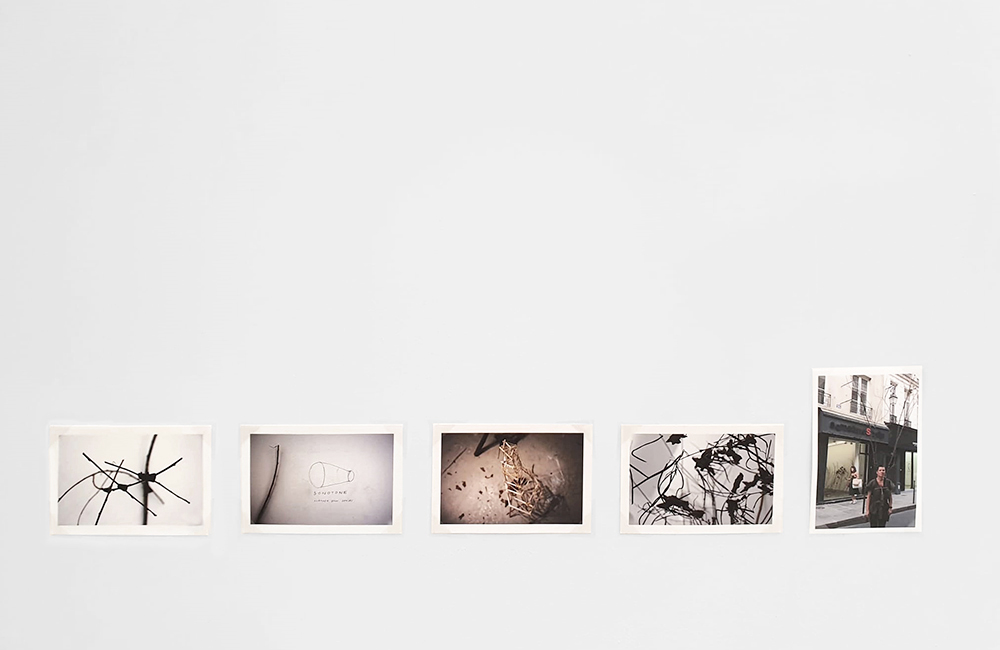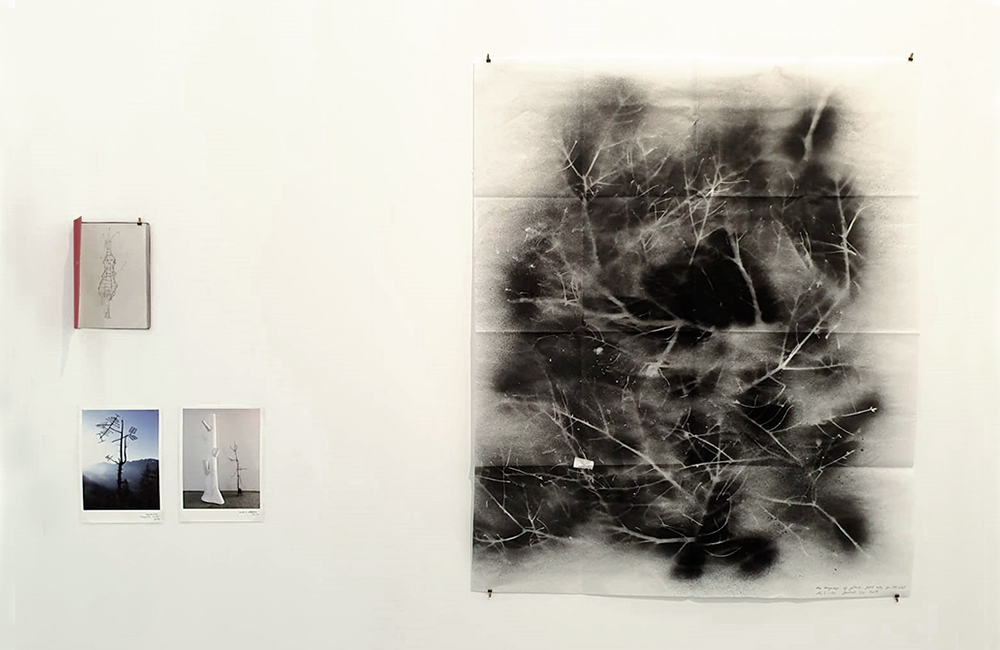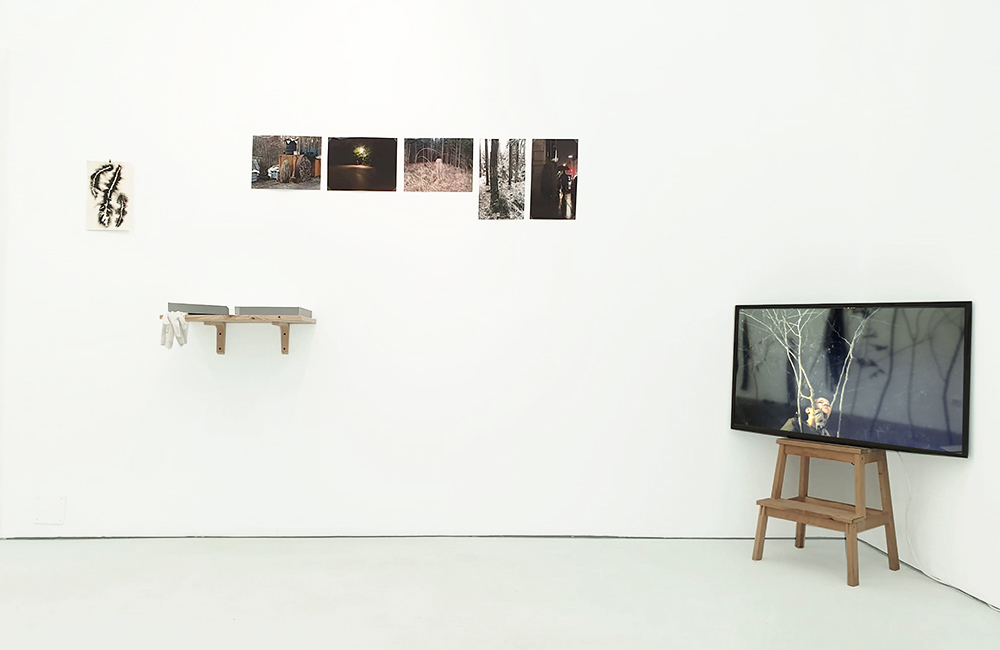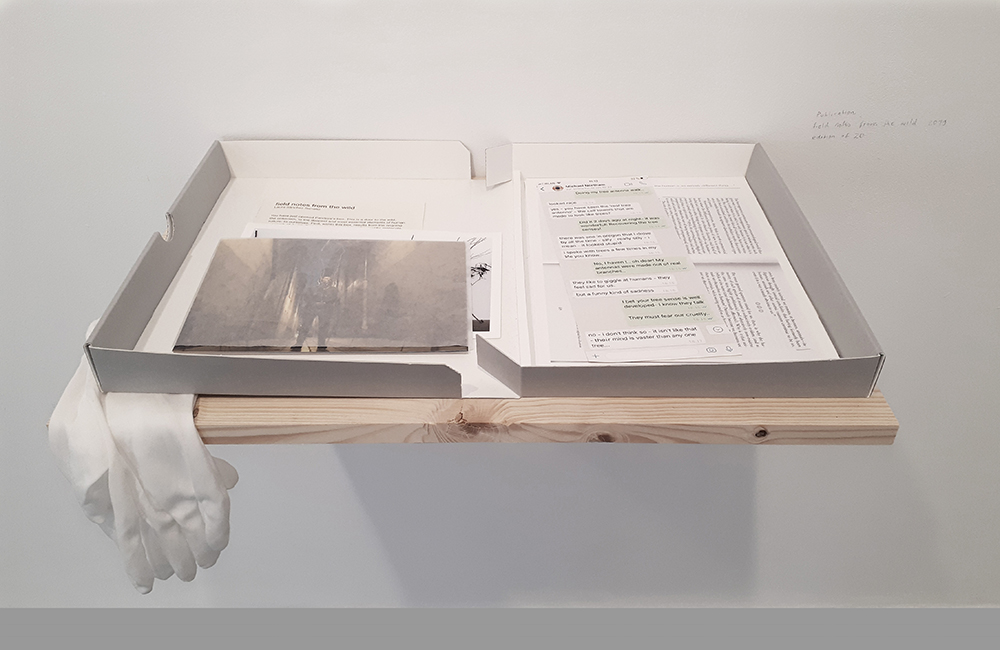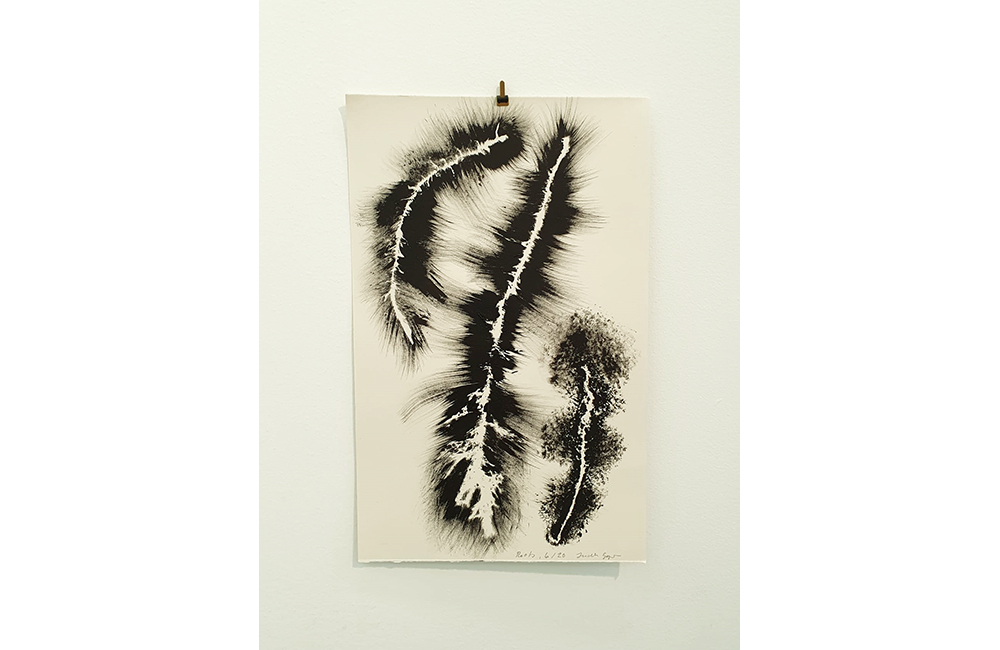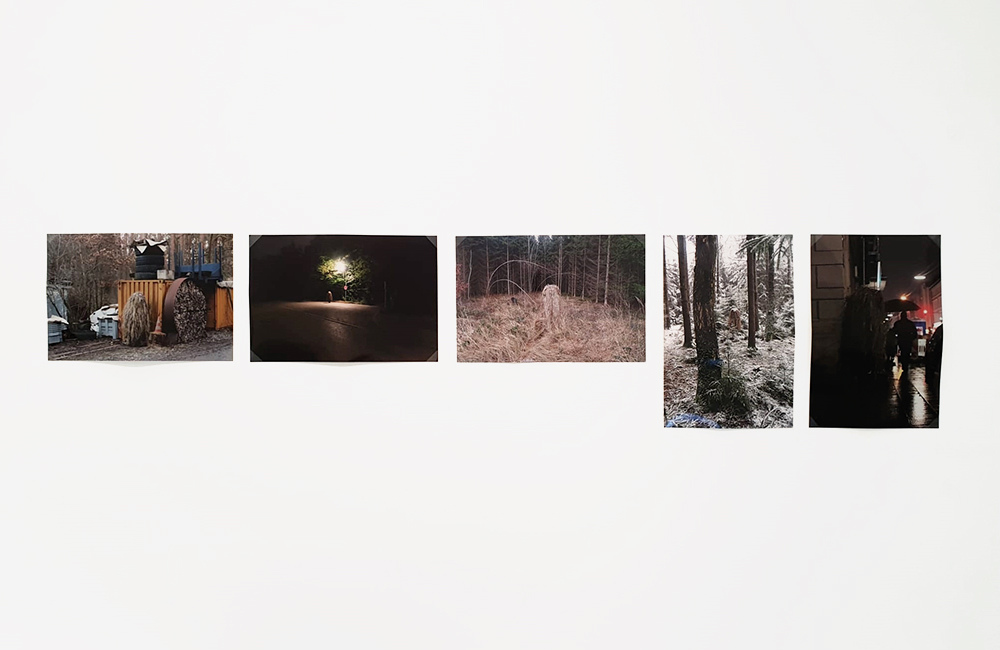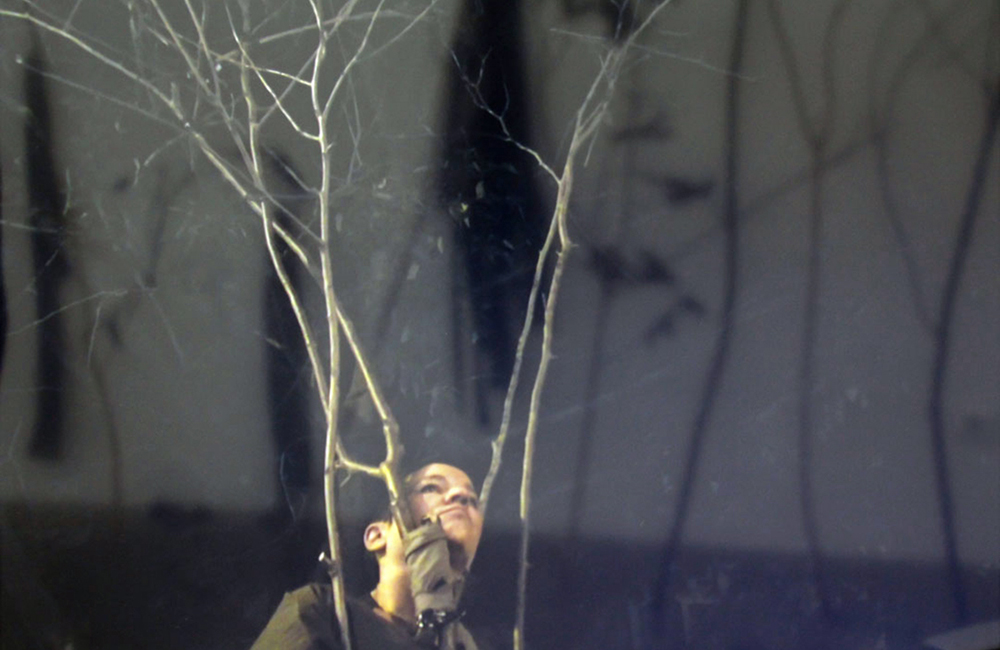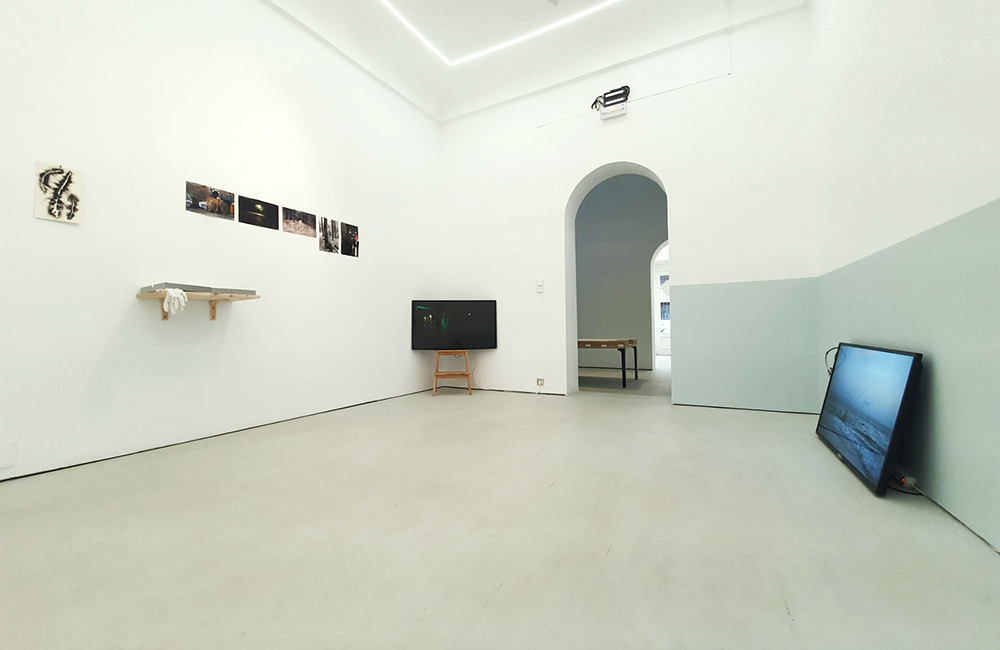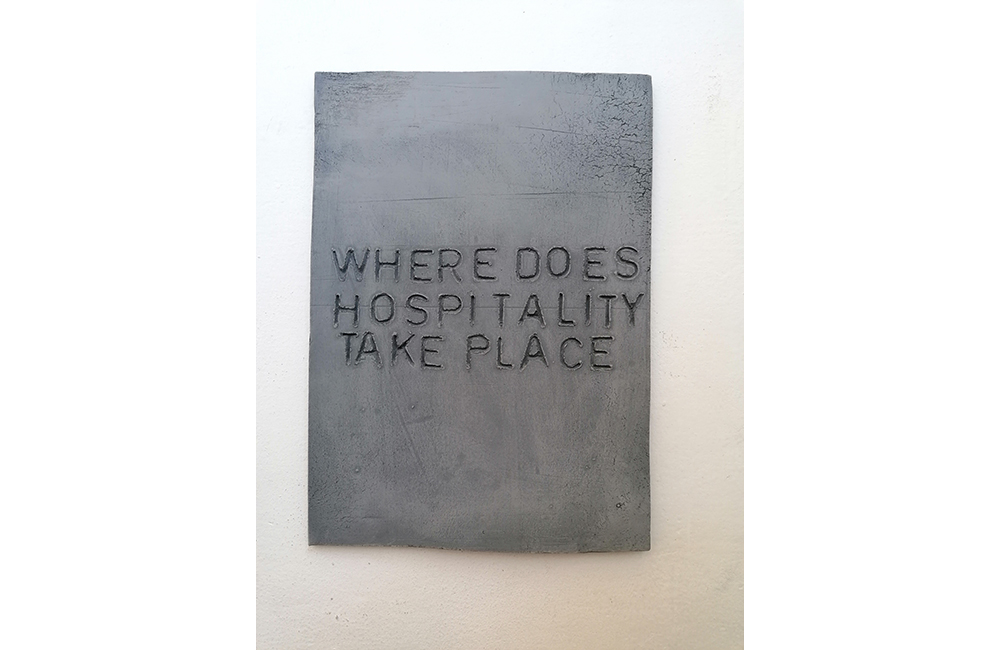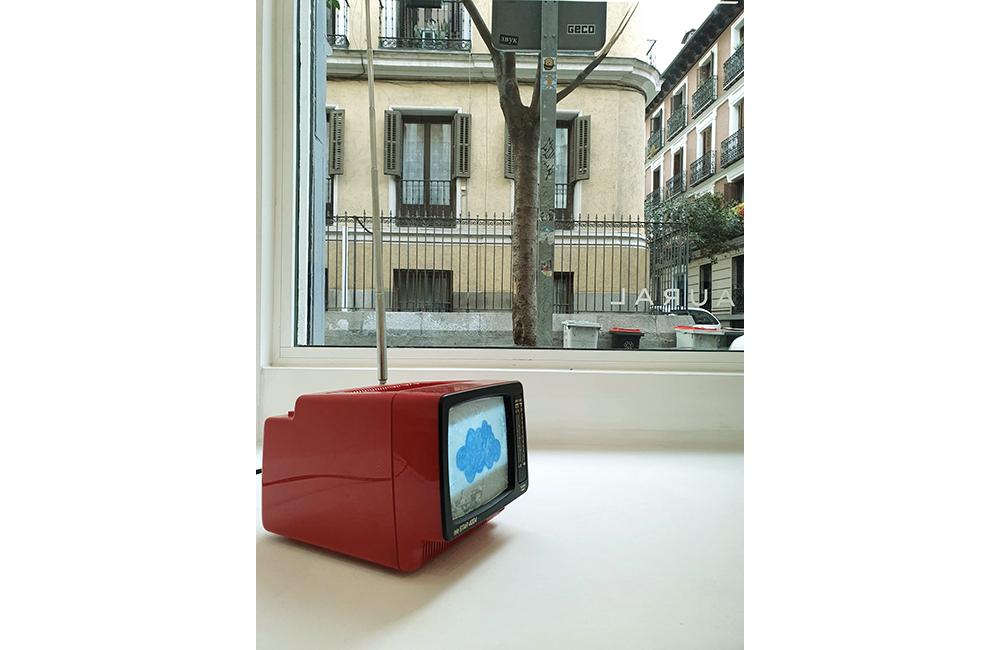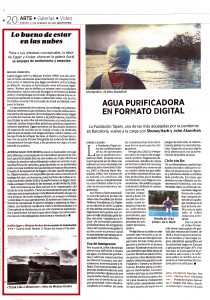Traversing the unthought [Atravesando lo impensable]
23.01 > 12.04.2021
Judith Egger & Mirjam Kroker | Madrid + Arco E-xhibitions Online
Nota de prensa | Press release | Dossier ESP | Dossier ENG | CV_Judith Egger | CV_MirjamKroker
Viewing Room ES ENG. ARCO E-XHIBITIONS ES ENG Version ampliada y visitando de vídeos
Proyecto relacionado:
Visionado completo ES ENG “Dialogo” Judith Egger & Mirjam Kroker, correspondencia, dibujos y documentos Visionado ES ENG
Comisariado por Begoña Martínez Deltell & Susana Bañuelos
No somos conscientes de buscar las fuentes del conocimiento no a través de lo estático pues la historia nos ha demostrado que nada es fijo, estable o permanente. Se trata de leer o aprender a leer el mundo que nos rodea reconociendo nuestras fuentes en el suelo que caminamos, el cielo, las montañas, las nubes, las rocas y los ríos, los mares, los árboles, los animales, las personas que pasan por nuestras vidas.
La primacía del movimiento, la fluidez y fricción de la naturaleza, el intercambio de la tierra, el cielo, el viento, el clima, etc. Las experiencias de luz, sonido, lo cambiante, lo nómada, lo imperceptible, lo illegible no por ser invisible carece de existencia. (Tim Ingold, BEING ALIVE 2011:12). Estamos caminando por el espacio sin referencia, laberíntico, sin escala ni centro, infinito, un espacio sinestésico , el espacio liso [the smooth space] (Deleuze y Guattari “Mil mesetas: Capitalismo y esquizofrenia” 2008).
Esta exposición se plantea como un diálogo entre dos artistas Judith Egger y Mirjam Kroker, ambas de orígen alemán, aunque se identifican como ciudadanas del mundo, comparten preocupaciones que contemplan muchas sincronicidades y analogías. En este proyecto dual se propone la vida como un proceso de caminar, una idea nueva del movimiento, el conocimiento y de estar vivo en el momento que suceden los acontecimientos. Es común la idea de transformación o visión del entorno y la vida desde la perspectiva del arte dado que éste se aleja de lo existente y crea nuevas formulaciones y posibilidades de observar el mundo con propuestas diferentes desde un enfoque fundamentalmente experimental, Judith desde la ciencia y Mirjam desde la antropología.
Judith Egger
Judith Egger explora en su obra las relaciones entre naturaleza y arte, ciencia y humanidad, investigando los procesos de transformación que afectan a la materia y, en consecuencia, al ser humano. Egger utiliza métodos científicos para cuestionar su limitaciones a la hora de dar respuestas claras a significado de nuestra existencia. A través de sus acciones irónicas llenas de poesía, la artista nos hace reflexionar sobre los procesos de deshumanización, apelando a la conciencia, obligándonos a despertar del letargo intelectual que sufrimos en una sociedad que ignora sus orígenes y destruye su entorno. Le impulsa la cuestión de la “fuerza vital”. El Élan vital le concierne en sus instalaciones, dibujos, fotografías y performances. El principio que subyace al orígen de la vida le ha fascinado durante años, así como las manifestaciones cambiantes de la energía.
Judith presenta una serie de videos, fotografías y dibujos relacionados con distintas cuestiones que aquí se plantean. La obra Origins (Silicium I y II) forma parte de un proyecto para el cual contó con la colaboración del biofísico Profesor Dieter Braun para la realización de “Origin/Origins” – un enfoque experimental sobre la autoorganización de la materia y el origen de la primera vida en la Tierra.
Field notes from the wild es una publicación singular pues se despliega en el espacio de la galería donde los elementos que la componen se tornan instalación. Es una revista pseudocientífica, una exposición portátil, todo un universo en una caja. Junto con material fotográfico incluye rastros de naturaleza impresa en papel, notas, poemas, conversaciones registros, documentos oficiales y dibujos preparatorios que surgen durante el proceso creativo. Siguiendo procedimientos científicos, Judith Egger presenta aquí los resultados de una investigación en proceso, que parte de la observación de eventos naturales que atraen su atención y que persigue, analiza, fotografía, dibuja, describe y con los que intenta entrar en contacto. En sus imágenes, combina lo familiar y lo absurdo, creando narrativas visuales llenas de humor y melancolía.
Judith Egger prosigue su investigación de campo realizando actividades nocturnas expediciones por el bosque o por el mar. Estas experiencias (Naturerfahrung) están representados en sus fotografías y videos, que muestran la magia de la naturaleza. En sus tres videos que se exhiben en la galería Transmission Wood, Transmission wave y Transmission wind, Egger construye sus propias herramientas para establecer algún tipo de comunicación con lo “salvaje”. En el primero, Judith se equipa con grandes antenas formadas por una amalgama de ramas adheridas a su cuerpo, explora las calles desiertas de París en busca de señales remotas; en el segundo se prove de una serie de antenas sobre la orilla del mar Mediterráneo para intentar comunicarse con él y las olas que forman al romper con la costa; en el tercero, se construye una suerte de elementos o artefactos que dan paso al viento en su caminar por el verdor de un terreno más campestre y rural.
Sus videos son parte de un proyecto artístico en curso que tiene como objetivo analizar la compleja relación entre la sociedad contemporánea occidental y el concepto de “salvaje”, centrándose sobre las tensiones entre civilización y naturaleza, entre construcción humana y caos natural.
Mirjam Kroker
Mirjam sigue un marco de pensamiento diferente al canónico occidental. Le interesan algunos métodos de investigación antropológica, especialmente para la creación artística como el trabajo de campo desde la donde puede referirse a enfoques antropológicos e históricos y al arte conceptual, sin necesariamente entenderlo como una contradicción.
Su trabajo a menudo captura momentos en los que algo que se aprecia como opaco o invisible, o incluso sólo temporalmente accesible, visible y audible. Mirjam es resistente a las categorías estrictas o establecidas que tienden a reducir la naturaleza de las cosas a través de la racionalización, exotización, idealización, utilización. Un patrón complejo de control para maximizar la explotación de recursos. Explora diferentes maneras de conocimiento en el proceso de adaptar, habitar y transferir. Entonces, lo que llamamos “naturaleza” está indisolublemente conectado con la cultura, la economía, la tecnología, la organización social, el derecho. Kroker se aleja de las ideas distópicas sobre el futuro o el fin de la naturaleza pues le interesa más crear nuevas narrativas fuera de lo establecido o dogmatizado. Su trabajo está más cerca de un enfoque poético, no apoyándome en el vocabulario ya establecido para explicar las cosas, sino dando espacio a pequeños momentos de reflexión. Mirjam trata realmente de aceptar la incertidumbre, intentar escuchar y dar la bienvenida a la inestabilidad del conocimiento por un momento . En lugar de homogeneizar el conocimiento, propone pensar como una montaña, pensar verticalmente, interrumpir, contra esta cosmovisión plana.
La obra Think like a Mountain [Pensar como una montaña] trata, de manera poética, de cuestionar por qué pensamos lo que pensamos, por qué sentimos, lo que sentimos y por qué escuchamos lo que escuchamos ”. Es el punto de partida de una investigación experimental en la que trata de escuchar el estado de ánimo del mundo (“sintonizar con el mundo” – término acuñado por Murray Schafer).
La obra principal que presenta en la galería International Cloud Archive No. 1 es un intento continuo de establecer un terreno estable a través de la captura, recolección y archive de tantas nubes como sea posible y reflexionando sobre esta práctica para estimular un proceso de pensamiento de nuestra condición contemporánea del ahora y sus implicaciones socioculturales políticas y poéticas. Una de las primeras nubes recogidas se encontró el 18 de enero del invierno de 2017 en Madrid.
We are not conscious that we make a mistake seeking the sources of knowledge through statics, since history has shown us that nothing is fixed, stable or permanent. This deals with reading or learning how to interpret the world around us by recognising our sources on the ground we walk on, as well as in the sky, the mountains, the clouds, the rocks and the rivers, the seas, the trees, the animals, and people who have been in our lives.
ENG
Curated by Begoña Martínez Deltell & Susana Bañuelos
The Primacy of Movement, fluidity and friction in nature, exchange of the earth, the sky, the wind, the climate, etc. Experiences of light, sound, what is changing, what is nomadic, what is imperceptible, and what is illegible do not lack of existence for being invisible (Tim Ingold, Being Alive, 2011:12). We are walking through a space having no reference, being labyrinthine, infinite, lacking scale or centre, being a synaesthetic space, the smooth space (Deleuze and Guattari’s work A Thousand Plateaus: Capitalism and Schizophrenia, 2008).
Judith Egger
In her work, Judith Egger explores the relationship between nature and art, science, and humanity, investigating the processes of transformation that affect the matter and, consequently, human beings. Egger uses scientific methods to question her limitations in giving clear answers to the meaning of our existence. Through her ironic actions filled with poetry, the artist makes us reflect on the processes of dehumanisation while appealing to our conscience, forcing us to wake up from intellectual lethargy we are suffering in a society that ignores its origins and that is destroying its environment. Judith is driven by the question of “life force”, so that Élan Vital concerns her in her facilities, drawings, photographs, and performances. The principle behind the origin of life has fascinated her for years, as well as changing manifestations of energy.
She presents a set of videos, photographs and drawings being related to different issues which have been raised here. It is called Origins (Silicium I and II) and it is part of a project in collaboration with biophysicist Professor Dieter Braun for the creation of Origin/Origins -an experimental approach to self-organisation of the matter and the origin of the first life on Earth-.
Field notes from the wild is a unique publication being displayed in the gallery space. Its constituent elements became a facility themselves. It is a pseudo-scientific magazine, a portable exhibition, in essence: a whole universe in a box. Along with photographic material, traces of nature printed on paper, notes, poems, conversation records, official documents and preparatory drawings are also included, and all of them emerged during the creative process. Following scientific procedures, Judith Egger presents to us the results of a research in progress being based on the observation of natural events that attracted her attention, and that she pursued, analysed, photographed, drawn, described, and tried to come into contact. Throughout her images, she combined family life and absurdity, creating visual narratives full of humour and also melancholy.
Judith Egger continues her field research via night-time expeditions in the forest or by sea. These experiences (Naturerfahrung) are represented in her photographs and videos, showing the magic of nature. Her three videos exhibited at the gallery: Transmission Wood, Transmission Wave and Transmission Wind, allow Egger to construct her own tools in order to establish some kind of communication with the “wild”. In the first one, Judith equipped herself with large antennae made of an amalgam of branches attached to her body, while exploring the deserted streets of Paris seeking remote signals; in the second one, a series of antennae are provided on the shore of Mediterranean Sea in an attempt to communicate with the sea and the waves as they break against the shore; in the third one, a sort of elements or artefacts are constructed leading out to the wind, as she walks through the greenery of a country and rural landscape.
Her videos are part of an ongoing artistic project aiming her to analyse the complex relationship between contemporary Western society and the concept of “wild”, while focusing on tensions between civilisation and nature, between human construction and natural chaos.
This exhibition is conceived as a dialogue between two artists, Judith Egger and Mirjam Kroker, both of German origin. They identify themselves as citizens of the world, sharing concerns that contemplate many synchronicities and analogies. In this dual project, life is proposed as a process of walking, a new idea of movement, knowledge and being alive at the moment when events are taking place. The idea of transformation or vision of environment and life from the perspective of art is common since art moves away from the existing. This occurs in order to create new formulations and possibilities of observing the world through different proposals, from a fundamentally experimental approach: Judith from the point of view of science and Mirjam from anthropological perspective.
Mirjam Kroker
Mirjam follows a frame of thought which is different from canonical Western culture thought. She is interested in some anthropological research methods, especially for artistic creation such as fieldwork. From there, she attempts to formulate anthropological and historical approaches, as well as conceptual art, not necessarily taking it as a contradiction.
Her work often captures moments where something that is appreciated as being opaque or invisible, or even only temporarily accessible, becomes visible and audible. Mirjam is resistant to strict or established categories that tend to reduce the nature of things through rationalisation, exoticisation, idealisation, and utilisation. In other words, a complex pattern of control to maximise resource exploitation. The artist explores different ways of knowing during the process of adapting, inhabiting, and transferring. So, certainly, what we call “nature” is inextricably connected to culture, economy, technology, social organisation, and law. Kroker moves away from dystopian ideas about the future or the end of nature, being more interested in inventing new narratives outside what it is established or dogmatised. Her work is thus closer to a poetic approach, not relying on specified vocabulary to explain things, but making room to little moments of reflection. Mirjam is actually attempting to accept uncertainty, trying to listen, as well as welcoming the instability of knowledge for a short moment . Instead of homogenising knowledge, she proposes us to think like a mountain, that is to say: to think vertically, make interruptions, against this flat worldview.
The work Think like a Mountain deals, in a poetic manner, with questioning why we think what we think, why we feel what we feel and why we listen to what we listen to. This is the starting point of an experimental research in which she tries to listen to the mood of the world (“tuning of the world”, a term coined by Murray Schafer).
The main work presented at gallery International Cloud Archive No. 1 is an ongoing attempt to establish a stable ground through capturing, collecting, and archiving as many clouds as possible. Thinking about this practice to stimulate a thought process between our contemporary condition at the present time and its socio-cultural, political, and poetic implications. One of the first clouds collected was found on 18 January, during the winter of 2017, in Madrid.
Clipping
OTROS ENLACES
ARTE MADRID
IAC
Instagram
Facebook

